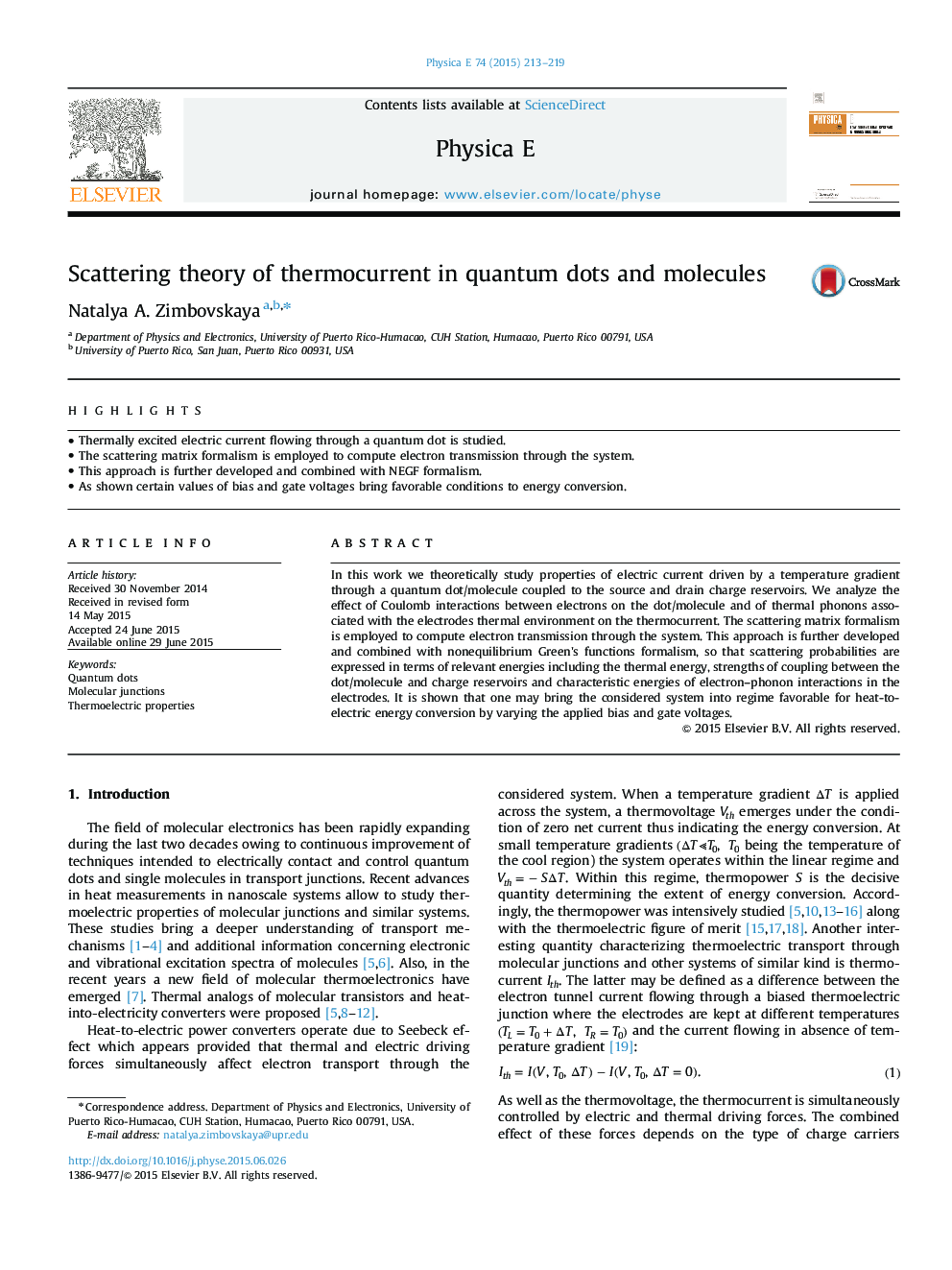| کد مقاله | کد نشریه | سال انتشار | مقاله انگلیسی | نسخه تمام متن |
|---|---|---|---|---|
| 7934128 | 1512875 | 2015 | 7 صفحه PDF | دانلود رایگان |
عنوان انگلیسی مقاله ISI
Scattering theory of thermocurrent in quantum dots and molecules
ترجمه فارسی عنوان
نظریه پراکندگی جریان گرما در نقاط کوانتومی و مولکول
دانلود مقاله + سفارش ترجمه
دانلود مقاله ISI انگلیسی
رایگان برای ایرانیان
کلمات کلیدی
نقاط کوانتومی، اتصالات مولکولی، خصوصیات ترموالکتریک،
ترجمه چکیده
در این کار، ما به لحاظ نظری، خواص جریان الکتریکی را که توسط یک گرادیان درجه حرارت از طریق یک نقطه کوانتومی / مولکول همراه با مخازن شارژ منبع و تخلیه هدایت می شود، مطالعه می کنیم. ما اثر تعاملات کولبین بین الکترونها در نقطه / مولکول و فونونهای حرارتی مرتبط با محیط حرارتی الکترود در جریان گرما را تحلیل می کنیم. فرمالیسم ماتریس پراکندگی برای محاسبه انتقال الکترون از طریق سیستم استفاده می شود. این رویکرد بیشتر توسعه یافته است و با فرمالیته عملکرد توابع عدم توازن گرین ترکیب شده است، به طوری که احتمال احتمالات پراکندگی از نظر انرژی مرتبط، از جمله انرژی حرارتی، نقاط قوت اتصال بین نقطه / مولکول و مخازن شارژ و انرژی مشخصی از تعاملات الکترون-فونون در الکترود نشان داده شده است که ممکن است سیستم مورد نظر را به حالت مطلوب برای تبدیل انرژی گرما به برق با تغییر ولتاژ تعصب و گشتاور اعمال کند.
موضوعات مرتبط
مهندسی و علوم پایه
مهندسی مواد
مواد الکترونیکی، نوری و مغناطیسی
چکیده انگلیسی
In this work we theoretically study properties of electric current driven by a temperature gradient through a quantum dot/molecule coupled to the source and drain charge reservoirs. We analyze the effect of Coulomb interactions between electrons on the dot/molecule and of thermal phonons associated with the electrodes thermal environment on the thermocurrent. The scattering matrix formalism is employed to compute electron transmission through the system. This approach is further developed and combined with nonequilibrium Green's functions formalism, so that scattering probabilities are expressed in terms of relevant energies including the thermal energy, strengths of coupling between the dot/molecule and charge reservoirs and characteristic energies of electron-phonon interactions in the electrodes. It is shown that one may bring the considered system into regime favorable for heat-to-electric energy conversion by varying the applied bias and gate voltages.
ناشر
Database: Elsevier - ScienceDirect (ساینس دایرکت)
Journal: Physica E: Low-dimensional Systems and Nanostructures - Volume 74, November 2015, Pages 213-219
Journal: Physica E: Low-dimensional Systems and Nanostructures - Volume 74, November 2015, Pages 213-219
نویسندگان
Natalya A. Zimbovskaya,
